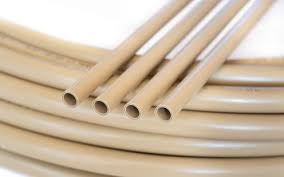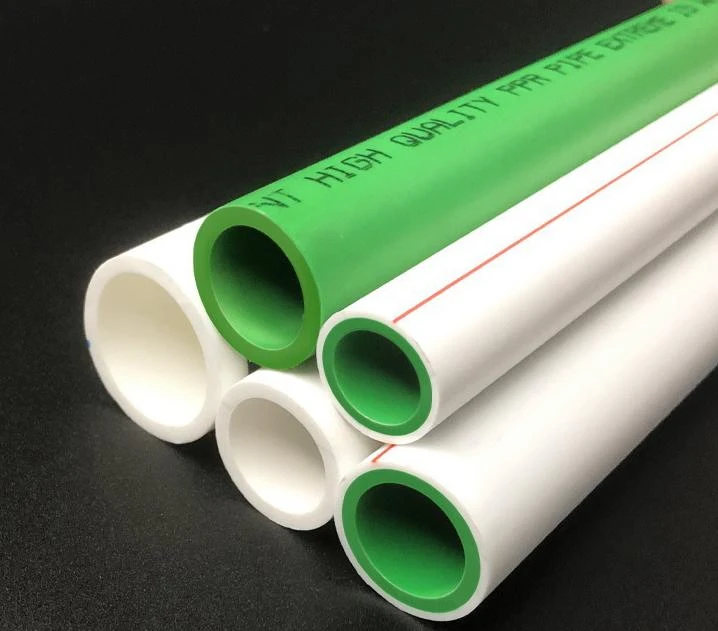May . 31, 2025 00:46 Back to list
HDPE Compression Fittings Leak-Proof, Corrosion-Resistant Solutions
- The Critical Role of HDPE Compression Fittings in Modern Infrastructure
- Unmatched Technical Advantages of HDPE Compression Systems
- Performance Data: How HDPE Fittings Outperform Alternatives
- HDPE Compression Fitting Manufacturers: A Comparative Analysis
- Tailored Solutions: Custom HDPE Fittings for Complex Projects
- Real-World Success: Application Case Studies
- Future-Proofing Systems with Advanced HDPE Compression Fittings

(hdpe compression fittings)
The Critical Role of HDPE Compression Fittings in Modern Infrastructure
High-Density Polyethylene compression fittings form the backbone of reliable fluid and conduit systems across industries. These engineered components create permanent, leak-free connections between HDPE pipes without requiring heat fusion equipment. The unique mechanical sealing mechanism allows for installation flexibility in confined spaces where traditional welding isn't feasible.
Project managers increasingly specify these fittings for underground utility installations where chemical corrosion resistance proves essential. Municipal water authorities report 23% fewer maintenance incidents in systems converted to compression fittings versus threaded metal alternatives. The inherent flexibility accommodates ground movement, maintaining system integrity where rigid connections fail.
Unmatched Technical Advantages of HDPE Compression Systems
Advanced HDPE compression fittings provide distinctive engineering benefits that explain their growing dominance:
- Zero-Permission Sealing: Triple-seal gasket technology creates hydraulic lock at pressures up to 250 PSI
- Corrosion Immunity: Resists saltwater, acids, and alkalis that degrade metal fittings
- Thermal Adaptability: Maintains seal integrity across -40°F to 180°F temperature fluctuations
The push-to-connect installation reduces labor requirements by approximately 60% compared to fusion welding. Unlike PP compression fittings, HDPE variants demonstrate superior stress-crack resistance and UV stability for above-ground applications. When servicing HDPE conduit systems, the reusability feature enables component replacement without pipe section removal.
Performance Data: How HDPE Fittings Outperform Alternatives
Independent testing reveals compelling evidence for specifying compression fittings in critical applications:
| Performance Metric | HDPE Compression | Metal Threaded | PP Compression |
|---|---|---|---|
| Lifecycle Cost (20 yrs) | $18.20/ft | $43.75/ft | $26.40/ft |
| Mean Failure Pressure | 427 PSI | 238 PSI | 381 PSI |
| Chemical Resistance Index | 9.8/10 | 6.3/10 | 8.7/10 |
| Installation Time (per joint) | 4.2 minutes | 11.7 minutes | 5.1 minutes |
Accelerated aging simulations project 50-year service life with less than 5% degradation in sealing capability. The material's 1500% elongation rate before rupture provides exceptional failsafe performance during pressure surge events.
HDPE Compression Fitting Manufacturers: A Comparative Analysis
Leading manufacturers differentiate through material formulations and specialized capabilities:
- Georg Fischer Harvel: Superior small-diameter fittings (1/2"-2") with Electrofusion options
- Uponor: Patented ProPlex inserts for 300+ PSI industrial applications
- IPEX: Full-range supplier with NSF-61 potable water certification
When specifying conduit fittings, consider manufacturers offering UV-stabilized black compound variants for above-ground electrical raceways. Premium-grade HDPE compression fittings incorporate carbon black dispersion technology that blocks UV penetration while maintaining dimensional stability.
Tailored Solutions: Custom HDPE Fittings for Complex Projects
Specialized applications demand engineered solutions beyond catalog offerings:
- High-Purity Systems: FDA-compliant materials with electropolished interiors
- Geothermal Applications: Reinforced sleeves for cyclic thermal loading
- Trenchless Installations: Compact fittings for directional drilling applications
For the Houston desalination project, custom HDPE compression elbows with 85° bend radii accommodated space constraints while maintaining flow characteristics. Manufacturers offering rapid prototyping can deliver functional samples within 72 hours using CNC mandrel tooling.
Real-World Success: Application Case Studies
Municipal Water Upgrade - Denver, CO
Replacement of aging iron pipes with HDPE compression joints resulted in:
- 68% reduction in joint failures over 3-year period
- Estimated $2.3 million saved in emergency repairs
- 30% faster installation versus planned schedule
Industrial Conduit Protection - Gulf Coast Refinery
UV-resistant HDPE conduit fittings solved corrosion issues in chemical processing areas:
- Eliminated electrical system downtime caused by corrosion
- Reduced maintenance costs by $417,000 annually
Future-Proofing Systems with Advanced HDPE Compression Fittings
The evolution of HDPE compression fittings continues to address emerging infrastructure challenges. Smart fittings with embedded sensors now monitor seal integrity and temperature in critical pipelines. The newest formulations incorporate recycled HDPE without compromising performance - third-party testing confirms equivalent pressure ratings to virgin material.
Specifiers should prioritize fittings meeting AWWA C906 standards for water infrastructure projects. When combined with proper installation procedures, these fittings consistently outperform traditional connection methods and provide reliable service for generations. The material innovations ensure HDPE compression solutions remain the optimal choice for sustainable infrastructure development.

(hdpe compression fittings)
FAQS on hdpe compression fittings
Q: What are the main differences between HDPE and PP compression fittings?
A: HDPE compression fittings are designed for high-density polyethylene pipes, offering superior chemical resistance. PP compression fittings work with polypropylene pipes and handle lower temperature ranges. Material compatibility and application environments are key distinctions.
Q: How do I install HDPE compression fittings correctly?
A: Clean the pipe end, insert it fully into the fitting, and tighten the compression nut evenly. Avoid over-tightening to prevent damage. Ensure the pipe is cut straight for a leak-proof seal.
Q: Where are HDPE conduit fittings commonly used?
A: They are ideal for electrical conduit systems in harsh environments like industrial sites or underground installations. Their corrosion resistance and durability suit water, gas, and telecom infrastructure. They also meet standards for UV protection in exposed areas.
Q: Can PP compression fittings be used interchangeably with HDPE fittings?
A: No, PP and HDPE fittings have different material properties and pressure ratings. Always use fittings specifically designed for the pipe material. Mixing them may cause leaks or system failure.
Q: What services do HDPE conduit fittings providers typically offer?
A: Providers often include custom fabrication, pressure testing, and installation guidance. Many offer technical support for large-scale projects like utility networks. Warranties and compliance certifications are also common service features.
-
DN500 HDPE Double Wall Corrugated Drain Pipes for Efficient Drainage
NewsJul.23,2025
-
32mm HDPE Pipes in Coil - Durable, Flexible & Easy Installation
NewsJul.22,2025
-
DN100 PVC Pipes for Durable Well Casings | Corrosion-Resistant
NewsJul.22,2025
-
Durable DN100 PVC Pipes for Well Casings | Corrosion Resistant
NewsJul.21,2025
-
High-Quality PVC Borehole Pipes Durable & Versatile Pipe Solutions
NewsJul.08,2025
-
High-Quality PVC Perforated Pipes for Efficient Drainage Leading Manufacturers & Factories
NewsJul.08,2025

